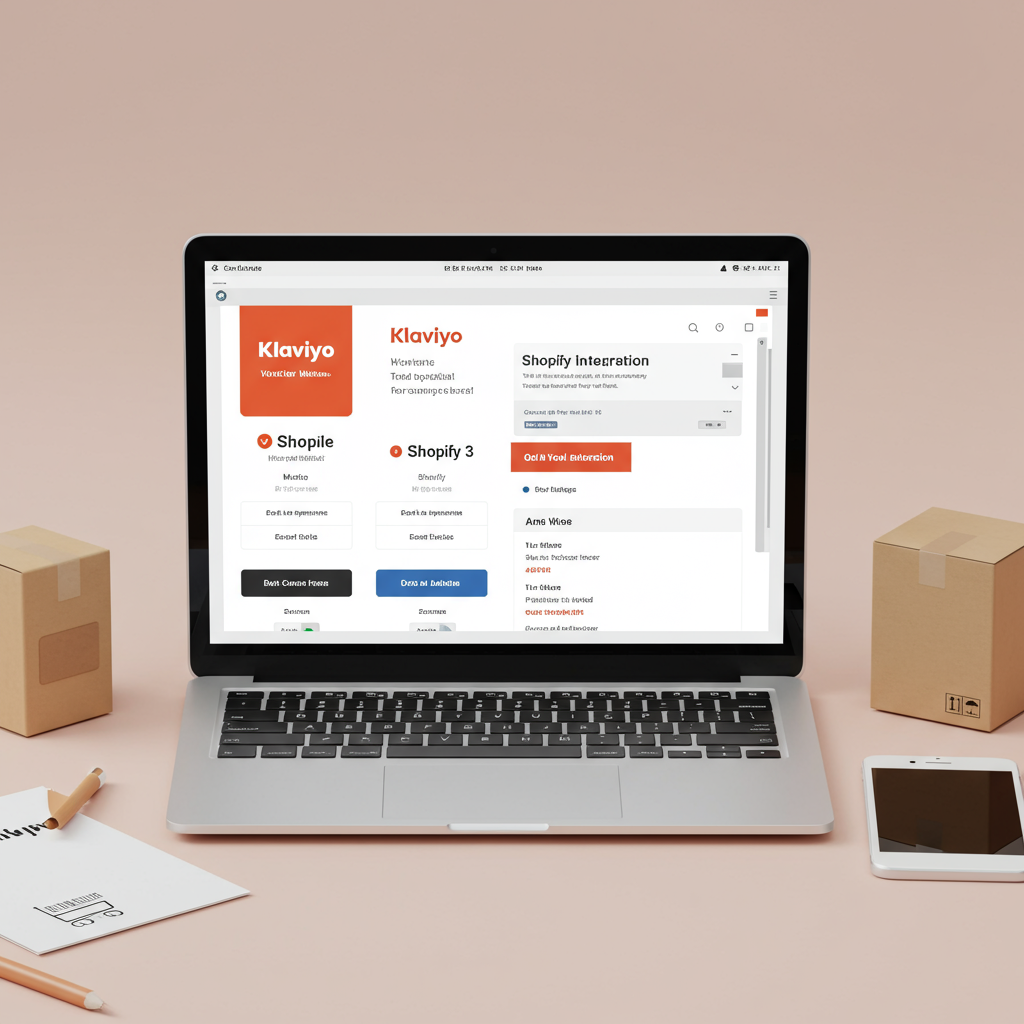Unlock the full potential of your Shopify store with powerful email and SMS marketing automation.
As a merchant navigating the competitive e-commerce landscape, I’ve learned that simply having a great product isn’t enough. You need to connect with your customers on a deeper, more personal level.
That’s where Klaviyo comes in, especially when paired with Shopify. For me, it’s been an absolute game-changer in transforming one-time buyers into loyal, repeat customers.
Today, I want to share my insights and walk you through exactly how I leverage Klaviyo with my Shopify store to drive sales, build relationships, and automate my marketing efforts.
First, let’s clarify what Klaviyo is. It’s a powerful email and SMS marketing automation platform specifically designed for e-commerce businesses.
Unlike generic email marketing tools, Klaviyo excels at integrating deeply with your Shopify store, pulling in rich customer data that allows for incredibly precise segmentation and personalization.
This deep integration means Klaviyo knows not just who your customers are, but what they’ve browsed, what they’ve bought, how much they’ve spent, and even when they last interacted with your store.
The initial setup is surprisingly straightforward. My first step was to log into my Klaviyo account and navigate to the ‘Integrations’ tab.
From there, I simply selected ‘Shopify’ and followed the prompts to connect my store. Klaviyo then began the process of syncing all my historical customer and order data.
This data sync is crucial. It populates your Klaviyo account with all the information needed to start building segments and flows right away, giving you a comprehensive view of your customer base.
Once connected, I always recommend verifying the integration. You can do this by checking your Klaviyo dashboard for recent activity or by looking at individual customer profiles to ensure their order history and browsing data are populating correctly.
Now, let’s talk about the real power: segmentation. This is where you define specific groups of customers based on their behavior and demographics.
I create segments for everything: new customers, repeat buyers, high-value customers, those who’ve abandoned a cart, or even those who’ve viewed a specific product category but haven’t purchased.
These segments are the foundation for highly targeted marketing. Instead of sending generic emails, I can tailor my messages to resonate with each specific group, significantly increasing engagement and conversion rates.
Next up are automated flows, which are the backbone of my Klaviyo strategy. These are automated sequences of emails or SMS messages triggered by specific customer actions.
My absolute must-have flow is the Welcome Series. When someone signs up for my email list (often via a pop-up on my Shopify store), they immediately enter this flow.
This series typically includes a welcome discount, a story about my brand, and highlights of my best-selling products. It’s about building a relationship from day one.
The Abandoned Cart flow is another non-negotiable. If a customer adds items to their cart on Shopify but doesn’t complete the purchase, Klaviyo automatically sends a reminder.
I usually set up a series of 2-3 emails, with the first sent within an hour, often including an incentive like free shipping or a small discount to encourage completion. This flow alone has recovered countless sales for me.
I also utilize a Browse Abandonment flow. This targets customers who viewed specific products but didn’t add them to their cart. It’s a softer nudge, reminding them of what they were interested in.
Post-Purchase flows are vital for customer retention. After a customer makes a purchase, I send a thank-you email, followed by requests for reviews, and then personalized product recommendations based on their purchase history.
For customers who haven’t purchased in a while, I set up a Win-back flow. This aims to re-engage dormant customers with special offers or updates on new products.
Beyond flows, I use Klaviyo for one-off campaigns. These are for promotions, new product launches, holiday sales, or general newsletters.
I always A/B test my subject lines, email content, and even send times to optimize my campaign performance. Klaviyo’s analytics make it easy to see what’s working and what isn’t.
Collecting emails is paramount, so I heavily rely on Klaviyo’s forms and pop-ups on my Shopify store. I’ve experimented with different designs and timing to maximize sign-ups without being intrusive.
These forms seamlessly integrate with my Klaviyo lists, ensuring every new subscriber is automatically added and can enter relevant flows.
A key piece of advice I can offer is to constantly monitor your Klaviyo dashboards. Pay attention to open rates, click-through rates, conversion rates, and revenue attributed to your emails.
This data provides invaluable insights into customer behavior and helps you refine your strategies. Don’t be afraid to experiment and iterate.
Finally, consider integrating SMS marketing. Klaviyo allows you to send targeted text messages, which can be incredibly effective for urgent promotions or shipping updates, especially for customers who opt-in.
What do you think about this article? I’d love to hear your thoughts on how you’re using Klaviyo or if this guide has sparked new ideas for your Shopify store.
In my experience, Klaviyo isn’t just an email tool; it’s a comprehensive customer relationship management platform that empowers Shopify merchants to build stronger connections and drive sustainable growth. It’s an investment that truly pays off.






